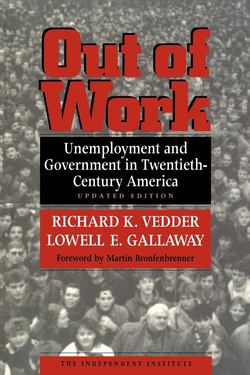Читать книгу Out of Work - Richard K Vedder - Страница 26
На сайте Литреса книга снята с продажи.
MONETARISM
ОглавлениеEven before the twentieth century, economists were aware that the amount of circulating medium—money—was a factor in determining the level of prices, interest rates, and possibly other important economic phenomena. Roughly simultaneously with the development of both the neoclassical and pre-Keynesian underconsumptionist (demand-oriented) theories of unemployment, the quantity theory of money was more systematically elucidated.19 A more sophisticated and appealing version of the theory gained increasing acceptance in the 1960s and 1970s, largely because of the work of Milton Friedman.20 Adherents of the modern version of the quantity theory were called “monetarists.”
Monetarists believe that the primary cause of economic fluctuations is variations in the supply of money. Over time, they suggest, there is a strong statistical correlation between changes in the stock of money and changes in prices and, when monetary changes are unanticipated, real output. Out of monetarist thinking came still another school of economics in the 1970s, the New Classical school, discussed below.
In some respects, there are similarities between the neoclassicals, the Austrians, and the monetarists. All of them have considerable faith in the ability of markets to correct imbalances. All three groups tend to be skeptical of governmental intervention to right macroeconomic wrongs.
Monetarists, however, like most Keynesians, tend to speak little about labor markets, and usually give little emphasis to the role of wages in unemployment determination. Most monetarists seem to believe that any unemployment-creating wage imbalance likely has its origin in monetary disturbances. For example, a decrease in the supply of money would lower prices and, money wages unchanged, raise real wages, thus aggravating unemployment. Commodity prices are greatly influenced by the supply of money and, other things the same, changing commodity prices mean changing real wages.
